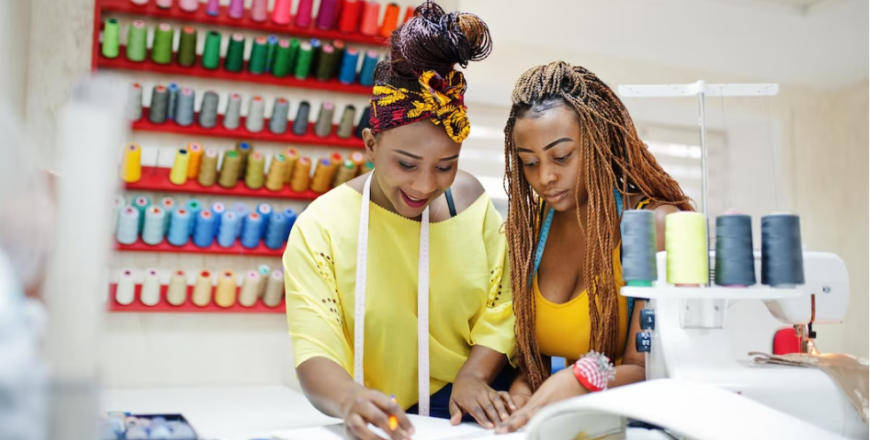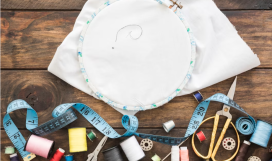Garment Pattern Development Assistant NQF L 05

Occupational Certificate: Garment Pattern Development Assistant NQF Level 05
PURPOSE AND RATIONALE OF THE QUALIFICATION
Purpose:
An Apparel Pattern Development Assistant uses a range of basic and complex blocks to produce a final pattern according to the design and customer requirements.
The qualifying learner will be able to:
Identify customer needs, complete product specifications and technical drawings
Explain and sequence the processes involved in the design and development of a sewn product following garment construction practices.
Rationale:
This qualification forms part of the Occupational Certificate: Apparel Patternmaker and Grader and equips learners with the necessary skills and competence to operate as an Apparel Pattern Development Assistant. The qualifying learner will be able to read and interpret briefs or designs of a garment and creating a working pattern and a pre-production sample. The qualifying learner will be skilled and capable of developing a final pattern according to the design and customer requirements, using both traditional and modern techniques, materials and fabrics to produce aesthetically pleasing and fit for purpose consumer products.
Learners will find employment as Apparel Pattern Development Assistants. These skills will also open opportunities for further learning as an Apparel Patternmaker and Grader or self-employment.
Target groups identified include school leavers with an NQF Level 4 qualification or persons working in the clothing industry without formal qualifications and has the desire to formalise their skills and knowledge.
Employers will benefit from appointing qualified workers in terms of increased productivity and the ability to be competitive in the international market and seek markets abroad, supplying quality manufactured apparel articles.
LEARNING ASSUMED TO BE IN PLACE AND RECOGNITION OF PRIOR LEARNING
Recognition of Prior Learning (RPL):
RPL for access to the external integrated summative assessment.
Accredited providers and approved workplaces must apply the internal assessment criteria specified in the related curriculum document to establish and confirm prior learning. Accredited providers and workplaces must confirm prior learning by issuing a statement of result or certifying a work experience record.
RPL for access to the qualification.
Accredited providers and approved workplaces may recognise prior learning against the relevant access requirements.
Entry Requirements:
NQF 4 with Mathematical Literacy and communication.
Or
NQF Level 1 (AET Level 4) with a minimum of three years assessed experience as pattern grader or design room assistant.
RECOGNISE PREVIOUS LEARNING?
Y
QUALIFICATION RULES
This qualification is made up of the following compulsory Knowledge, Practical Skills and Work Experience Modules:
Knowledge Modules:
683202-003-00-00-KM-03 Pattern-making Principles, Methods, and Equipment, Level 5, 30 Credits.
Total number of credits for Knowledge Modules: 30.
Practical Skill Modules:
683202-003-00-00-PM-02 Analyse the Brief/Design of a Garment to Identify Implications for Pattern-making, Level 5, 10 Credits.
683202-003-00-00-PM-03 Change the Base Pattern into a Style and Create the Pattern, Level 5, 40 Credits.
Total number of credits for Practical Skill Modules: 50.
Work Experience Modules:
683202-003-0000-WM-03 Pattern Making Processes in the Pattern-making Department, Level 5, 28 Credits.
Total number of credits for Work Experience Modules: 28.
EXIT LEVEL OUTCOMES
- Identify customer needs, complete product specifications and technical drawings.
- Explain and sequence the processes involved in the design and development of a sewn product following garment construction practices.
ASSOCIATED ASSESSMENT CRITERIA
Associated Assessment Criteria for Exit Level Outcome 1:
Identify and document customer needs for specific product types according to company procedures.
Interpret specification sheets for specific products according to customer requirements.
Complete annotated technical drawings for specific products according to customer requirements.
Associated Assessment Criteria for Exit Level Outcome 2:
Analyse and describe the stages and processes involved in the design and product development according to standard practice.
Identify the personnel involved in the design and product development according to their various functions and contributions to the design process.
Integrated Assessment:
Integrated Formative Assessment:
The skills development provider will use the curriculum to guide them on the stipulated internal assessment criteria and weighting. They will also apply the scope of practical skills and applied knowledge as stipulated by the internal assessment criteria. This formative assessment leads to entrance into the integrated external summative assessment.
Integrated Summative Assessment:
The relevant QCTO Assessment Quality Partner conducts an external integrated summative assessment for the issuing of this qualification. The external integrated summative assessment will focus on the Exit Level Outcomes and associated assessment criteria.
INTERNATIONAL COMPARABILITY
This qualification compares with components of two qualifications, namely the:
Diploma of Applied Fashion Design and Technology (Australia) (Level 5).
New Zealand Diploma in Apparel and Fashion Technology (Level 5).
New Zealand:
The New Zealand Diploma in Apparel and Fashion Technology (Level 5) is 120 Credits and prepares the learner for the apparel and fashion manufacturing sector with advanced technical skills in patternmaking and garment construction and production to meet the requirements of the company and the customer.
The comparison revealed that the New Zeeland and South African qualifications are similar in content, level, and complexity about the following qualification outcomes and related specified conditions:
Creating detailed specification sheets which may include: lay plan; garment description and accurate drawings; notions and trims; garment assembly instructions; costing and timings.
Applying knowledge of CAD (Computer-Aided Design) to a range of structured and unstructured garments.
Making garment patterns.
Select fabrics and apparel componentry appropriate to the end-use for a range of structured and unstructured garments.
Australia:
A comparison with the Australian Diploma of Applied Fashion Design and Technology (Level 5) revealed similarities in content and complexity of competencies. The Australian qualification includes the following aspects, which is similar to the South African qualification:
LMTCL2011B: Draw and interpret a basic sketch.
LMTCL3009B: Develop patterns from a block using basic pattern-making principles.
LMTFD4004B: Calculate cost estimates for fashion products.
LMTFD3004B: Draw a trade drawing for fashion design.
LMTFD4007B: Conduct quality assurance for patterns.
LMTFD4013B: Grade 2D patterns.
LMTFD4015B: Create a pattern from block to meet customer specifications.
LMTFD4021B: Drape fabrics to make patterns.
LMTFD5012B: Perform contour draping.
LMTFD5015B: Develop patterns for complex fashion garments.
LMTFD5018B: Determine and specify advanced construction processes.
LMTFD5019B: Analyse individual fit and make pattern alterations.
LMTGN2009B: Operate computing technology in a Textiles, Clothing and Footwear workplace.






